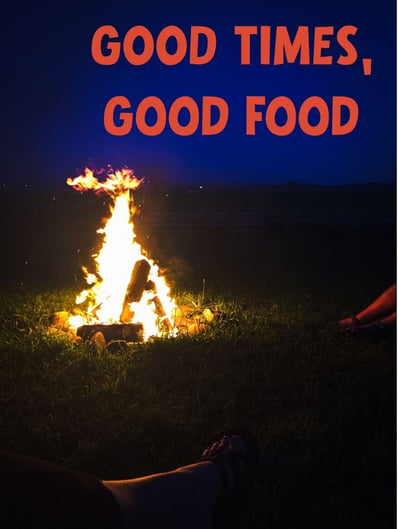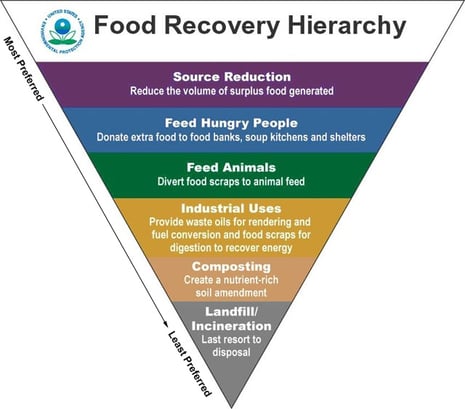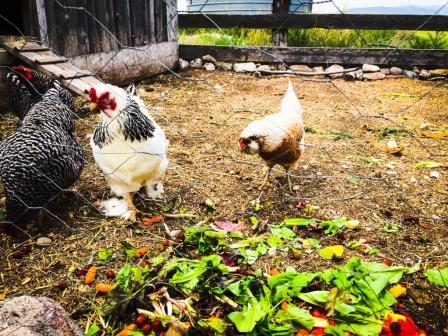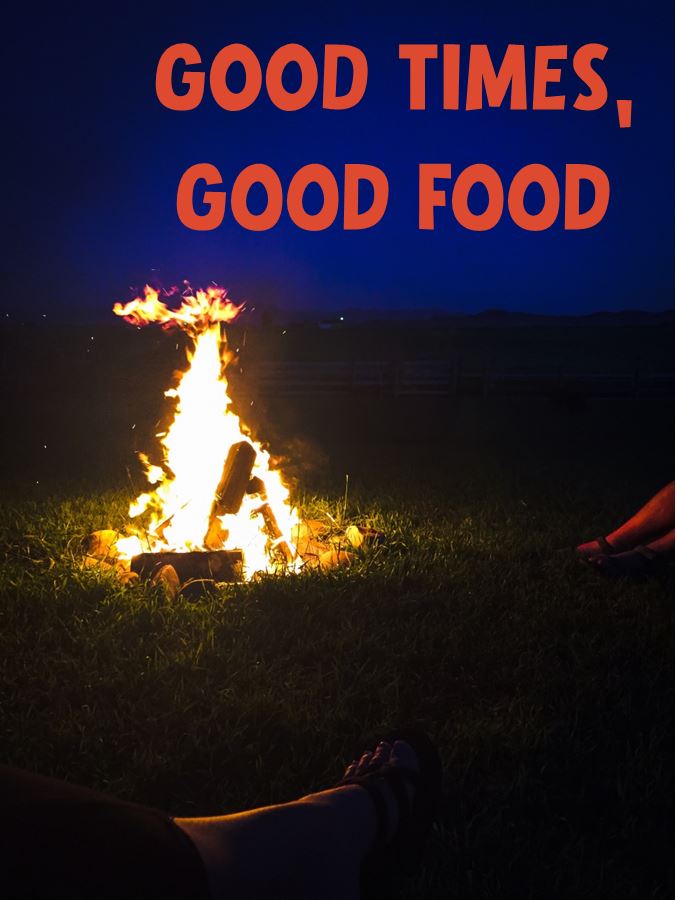 Across the country, summer weather tends to be fabulous — and what better way to enjoy these perfect days than by spending time with loved ones congregating around a meal of fresh, delicious and thoughtfully prepared food?
Across the country, summer weather tends to be fabulous — and what better way to enjoy these perfect days than by spending time with loved ones congregating around a meal of fresh, delicious and thoughtfully prepared food?
Here in Montana, a state that has a cattle to human ratio of about 2.5:1, we love to anchor a get-together with good barbeque. A meal of open-faced smoked brisket sandwiches on slices of grilled Great Harvest Cheddar Garlic bread accompanied by greens from the garden, grilled sweet corn, and topped off with a big slice of watermelon is the pinnacle of good summer food. Throw in some s’mores around the fire ring and you’ve got a quintessential Montana summer experience.
As much as I love to cook and share this good food with the people in my life, one thing has always bothered me. No matter how hard I try (and how full we all are at the end of the meal!), we usually have food left over. And, even though I could eat leftover brisket sandwiches for a week, it always seems like something ends up in the garbage.
How Big of a Problem Is Food Waste?
Logically, it’s easy to understand that we shouldn’t waste food. We know there are individuals who struggle with food insecurity and we know that if we waste food it means there is less food available for those who need it. Yet, after dinner we still scrape morsels off our plates and throw out questionable leftovers or wilted vegetables from our refrigerators. I knew these leftovers were wasteful, but it was a recent New York Times article covering a new report from British anti-waste organization Waste and Resources Action Program (WRAP) that really heightened my awareness to the issue.
Here’s a short public service video about food waste from the European Commission:
Food waste is a multi-billion dollar problem in the U.S. and around the world. According to a 2013 report by the United Nations Environment Program (UNEP) and the World Resources Institute, nearly one third of all food produced worldwide gets lost or wasted in food production and consumption systems. Of this wasted food, the majority, nearly 35%, of waste occurs at the consumption stage of the value chain — that means in our homes and where we dine.
World Food Day USA (a UNEP program) shares some additional alarming facts about food waste in the United States:
- In the USA, organic waste is the second highest component of landfills, which are the largest source of methane emissions
- In the USA, 30-40% of the food supply is wasted, equaling more than 20 pounds of food per person per month
Digging deeper, we learn that food waste isn’t just an economic issue – its environmental impact is also vast. The Food Waste Alliance, an organization of commercial groups committed to eliminating food waste, informs us that when food waste decomposes in landfills it creates methane – a greenhouse gas with 21 times the global warming potential of carbon dioxide. Nearly 13 percent of greenhouse gasses in the United States are associated with growing, manufacturing, transporting and disposing of food. Working to reduce food waste will result in reduced methane emissions. We also can’t forget the inputs that go into growing food – including water and energy. Wasted food is also a waste of these resources.
What can we do?
There are many ways we as consumers can work together to prevent food waste. The U.S. Environmental Protection Agency breaks down the main efforts into the Food Recovery Hierarchy.  These efforts include:
These efforts include:
- Reduction/Prevention
- Preventing food waste before it is created
- Feeding People
- Donating fresh, wholesome food to those in need
- Feeding Animals
- Feeding safe, fresh food scraps to animals like pig farms
- Industrial Uses
- Rendering fats, oils, and grease and turning it into products or biofuel
- Composting
- Turning food waste into a valuable soil amendment
- Anaerobic Digestion
- Turning food waste into renewable energy and a valuable soil amendment
At our house we’ve been focusing on source reduction and prevention. With only two of us in our household, we’ve really worked on reducing over- purchasing. Our lives are busy and our plans change frequently, so rather than making one big trip to the grocery store every week, we’ve been making several smaller trips allowing us to get only what we know we will use and also having the side benefit of ensuring our food is always as fresh as possible. Another thing we are able to do is feed food scraps to animals. On our ranch we have several chickens who love vegetable scraps (and two dogs that may or may not occasionally get meat scraps). Although I hate over-purchasing and wasting the food, feeding leftovers to the animals provides them nourishment and keeps our scraps out of the landfill.
Another thing we are able to do is feed food scraps to animals. On our ranch we have several chickens who love vegetable scraps (and two dogs that may or may not occasionally get meat scraps). Although I hate over-purchasing and wasting the food, feeding leftovers to the animals provides them nourishment and keeps our scraps out of the landfill.
At Great Harvest Franchising in Dillon, Montana, we have been working to compost many of the food scraps leftover from our production processes. Heels of bread, vegetable scraps and coffee grounds are bagged to go home with several employees for their personal compost piles. We slice all of the meats and cheeses for our sandwiches fresh in our training facility – but it’s nearly impossible to slice 100% of a roast or log of cheese. Thus, we upcycle these perfectly good meat and cheese scraps into our delicious biscuits. Many of our bakeries have adopted and further refined these practices.
As consumers, we collectively can play a large role in food waste reduction. What are you doing in your home? Here are two easy things you can do right now:
- Share this post with others to help increase awareness and keep the issue top of mind.
- Check out creative ideas for reducing food waste on sites like LoveFoodHateWaste, a WRAP affiliate.
Don’t miss the next post on the Bread Business Blog!
If you enjoyed this post you might also appreciate:





